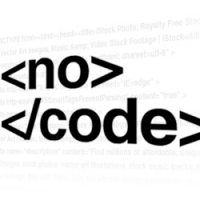Merging New Codeless Test Automation with Your Existing Code-Based Test Scripts

Many software organizations are already in the process of adopting codeless test automation tools that leverage machine learning and AI capabilities.
Among the key reasons organizations are looking into such solutions are the ability to develop and maintain reliable code-based test automation using Selenium or Appium frameworks, as well as the time it takes to create a code-based test scenario compared to codeless creation.

Adopting a codeless solution can be an amazing boost to quality, productivity, and tester career growth, but in most organizations, such test suites will have to be merged into existing robust code-based test scripts.
To succeed in such a transition, developers, testers, and management all ought to consider the following differences between the two approaches.
Test Creation
This is the most important aspect, and the one that differs the most from the standard coding of test scripts. With codeless, the practitioner will use a record-and-playback smart solution backed by AI and machine learning algorithms to make the test creation easy, fast, and reliable. While this is great, teams should realize how to sync these tests with the entire suite so the mix of codeless and code-based solutions is valuable, does not overlap, and can be executed together within CI or another trigger in the development pipeline.
Test Maintenance
Here, codeless brings a fresh approach around self-healing scripts by learning the entire objects of the pages and the apps so when something changes, it will be seamless for the test and won’t break ongoing test executions. Such tests are not code-based, so they are not maintained in a source control management tool. Teams need to have a process to manage, maintain, and update the codeless scripts as the product evolves and matures.
Test Execution
Test execution should not suffer from becoming codeless. Codeless solutions should play along with the existing code-based tests and run from within the CI on the relevant mobile or web platforms. In non-CI testing cycles, the codeless UI can provide a built-in execution management capability and then complement the execution done from the code-based tools. Merging test results from both execution types should deliver a single result of quality visibility.
Testing Types and Supported Apps
Code-based test frameworks have a longer history and work fine on mobile native apps and web apps, but codeless tools are still emerging, and the level of support for web and mobile is growing slowly. This should be taken into consideration when making the switch or adding such a tool into your portfolio. With that in mind, the tools out there are providing great value and closing gaps, and being an early adopter isn’t necessarily a bad thing.
Tool Maturity
For code-based tools there are code samples, best practices and books, documentations, integrations with ALM, defect management tools, and more. For codeless testing, there are fewer proven practices within a continuous testing and DevOps workflow. You’ll need to build that knowledge as the market grows with the tools.
Next-generation codeless automation is ushering in a change to our fundamental testing practices. These tools with smart abilities are the next step toward maturing our DevOps and continuous testing practices.
Eran Kinsbruner is presenting the session Future-Proofing Test Engineers in the Era of ML and AI at the STAREAST 2019 conference, April 28–May 3 in Orlando, Florida.

